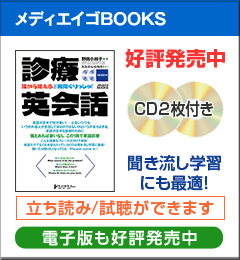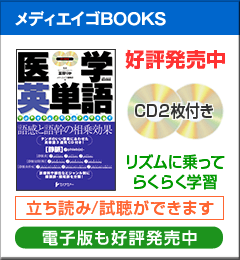
サソリとナノ粒子で癌を撃退
News Release from University of Washington on April 16, 2009.

(C) University of Washington
ナノ粒子に付着したクロロトキシンが
MMP-2に結合
サソリの毒をナノ粒子(10億分の1mレベルの微小な粒子)に搭載することで,癌に対する効果が倍増することが明らかになった。サソリの毒から抽出されるクロロトキシンという物質は癌に集まる性質があり,癌細胞が体の他の部分に移動して癌を広げるのを防ぐ。マウスの脳腫瘍の細胞を使って実験したところ,クロロトキシンのみが癌の広がりを45%抑えたのに対し,ナノ粒子とクロロトキシンの組み合わせは98%抑えた。これは,ナノ粒子と組み合わせた方がクロロトキシンが体内に長くとどまり,癌細胞の変形を妨害する効果を発揮するためと考えられている。(吉田素子)
By combining nanoparticles(1) with a scorpion(2) venom(3) compound(4) already being investigated(5) for treating brain cancer(6), University of Washington researchers(7) found they could cut the spread of cancerous cells(8) by 98 percent, compared to 45 percent for the scorpion venom alone.
"People talk about the treatment being more effective with nanoparticles but they don't know how much, maybe 5 percent or 10 percent," said Miqin Zhang, professor of materials science and engineering(9). "This was quite a surprise to us." She is lead author of a study recently published in the journal Small.
For more than a decade(10) .scientists have looked at using chlorotoxin(11), a small peptide(12) isolated(13) from scorpion venom, to target and treat cancer(14) cells.
Chlorotoxin binds to a surface protein(15) overexpressed(16) by many types of tumors(17), including brain cancer. Previous research by Zhang's group combined chlorotoxin with nanometer-scale(18) particles(19) of iron oxide(20), which fluoresce(21) at that size, for both magnetic resonance and optical imaging(22).
Chlorotoxin also disrupts(23) the spread of invasive(24) tumors -- specifically(25), it slows cell invasion(26), the ability of the cancerous cell to penetrate(27) the protective(28) matrix(29) surrounding(30) the cell and travel to a different area of the body to start a new cancer. The MMP-2(31) on the cell's surface(32), which is the binding site(33) for chlorotoxin, is hyperactive(34) in highly invasive tumors such as brain cancer. Researchers believe MMP-2 helps the cancerous cell break through the protective matrix to invade(35) new regions(36) of the body. But when chlorotoxin binds to MMP-2, both get drawn into the cancerous cell.
(1) ナノ粒子 (2) サソリ (3) 毒 (4) 化合物 (5) 研究されていた (6) 脳腫瘍 (7) 研究者
(8) 癌細胞(9) 材料科学および材料工学 (10) 10年 (11) クロロトキシン (12) ペプチド
(13) 単離された (14) 癌 (15) 表面蛋白質 (16) 過剰発現した (17) 腫瘍 (18) ナノメートル規模の
(19) 粒子(20) 酸化鉄 (21) 蛍光を発する (22) 磁気共鳴および光学的画像法 (23) 中断させる
(24) 浸潤性の (25) 厳密にいえば (26) 細胞浸潤 (27) ~を突き抜ける (28) 保護する
(29) 基質 (30) ~の周りの (31) マトリックスメタロプロテアーゼ-2 (32) 表面 (33) 結合部位
(34) 過剰に活性化している (35) ~に浸潤する (36) 部分


